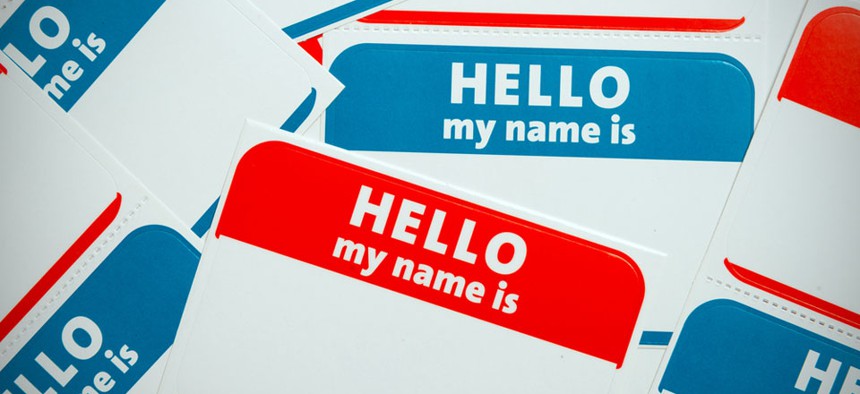Why Federal Agencies Want to Get on a First Name Basis With You

Mike Flippo/Shutterstock.com
A small team within the Office of Science and Technology Policy is tasked with using techniques in the social and behavioral sciences’ toolbox to make the federal government more efficient.
Imagine you receive two nearly identical emails from your health care provider asking for feedback. The only difference between the two notes? One addresses you by name, while the other simply begins with a generic “Greetings.”
Which one would you respond to?
Chances are, it's the one that highlights your individuality by addressing you by name, according to the Social and Behavioral Sciences Team.
The small group of recently recruited scientists working out of the White House Office of Science and Technology Policy just hit its one-year anniversary. The team is charged with using techniques in the social and behavioral sciences’ toolbox to make the federal government more efficient -- and perhaps even cheaper for taxpayers.
Thus far, SBST pilot programs have had success. The team has partnered with about a dozen federal agencies to make changes as straightforward as adding each recipient’s name to emails, and as complex as reformatting emails to spur readers into action.
The Office of Federal Student Aid, for example, wanted its borrowers to become better informed of their options for paying off loans, especially in terms of income-driven repayment. It teamed up with SBST to send about 3 million emails to those deemed “struggling student borrowers.”
All emails, save those in their control group, used clear and timely information to explain the eligibility requirements for income-driven repayment, along with its benefits and costs, according to OSTP. In a single month, the new emails resulted in about 6,000 more completed applications for the repayment option.
“The team was created in response to the administration’s call to make government programs more effective and efficient,” said Maya Shankar, the team's senior adviser, in a White House blog post.
Team Inspired by Similar UK Unit
SBST was inspired by a similar team in the U.K. called the Behavioral Insights Team. Frequently referred to as the “Nudge Unit,” BIT was established about five years ago, thanks in part to the popular book, “Nudge: Improving Decisions About Health, Wealth and Happiness" by Richard Thaler and Cass Sunstein. (Sunstein later served in President Barack Obama's administration as director of the Office of Information and Regulatory Affairs).
“It’s partly just about the sense of a human interaction,” said David Halpern, leader of the UK team, at the Behavioral Exchange Conference in Sydney last year.
An important focus for BIT has been to slash the unemployment rate, Halpern explained. The team noticed only 10 percent of individuals who signed up for job fairs actually attended them. But by personalizing would-be attendees' letters, the team saw a dramatic increase in participation.
“Almost every area of domestic policy is now influenced by behavioral insights,” Halpern said. “There’s really not a department we don’t work with.”
Obama Budget Expands Behavioral Team
SBST, the U.S. team, has also begun to work with a wide array of agencies, including the Defense Department. A recent project there worked to make sure more than 100,000 Armed Forces members re-enrolled in their Roth Thrift Savings Plans. In addition to making email communication more personalized, they also tried to clearly outline the specific steps in the renewal process.
And it seems to have worked. After the first week of using the reformatted email, DOD saw a 22 percent spike in the number of re-enrollments.
SBST will likely soon grow even further.
President Barack Obama’s 2016 budget supported an expansion of the team, highlighting how it's been able to partner with federal agencies to “test the impact of behaviorally informed interventions on program impact and efficiency using rapid, rigorous and low-cost randomized control trials.”
(Image via Mike Flippo/Shutterstock.com)


